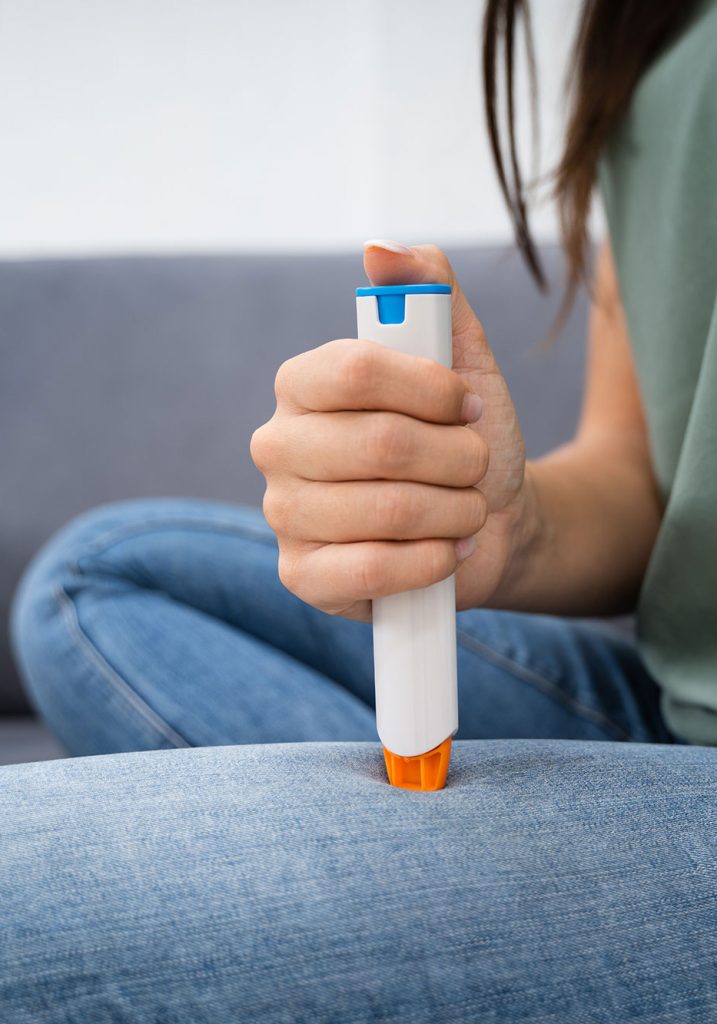
Despite being so often used, and widely known, only a few are aware of how to prevent adrenaline from degrading and with this, rendering it either unsafe to use or leading to its loss of effect.
Probably the most significant lack of information is related to temperature control.
In reality, most users of an adrenaline auto-injector are unaware that constant exposure to a high heat source or prolonged exposure to sunlight (5) will lead to the degradation of the adrenaline inside.
To make matters slightly worse, even if we look at the adrenaline’s colour to see if it has changed, often it has not.
This means it might have degraded, but there are no warning signs.
Due to this, it is even more important to keep the injectors under reasonable temperature control to decrease the chance that the adrenaline inside them is rendered ineffective.
So, the most important question to ask is, “what is the range of temperatures needed to keep adrenaline from degrading”?
Current evidence shows adrenaline needs to be stored between 20oC and 25oC, though the range can be extended to between 15oC to 30oC. (1, 2)
Some studies have suggested that adrenaline starts losing its capacities from 37oC. (3)
It is important to note that very low temperatures do not lead to the degradation of adrenaline. (2, 4)
But be aware that both low and high temperatures will affect the mechanism inside the injector itself. (1)
In conclusion, to keep your adrenaline and injectors usable for emergencies, this is what you should do:
- Keep your injectors, along with other medication, in a medication bag capable of keeping the temperature stable for a few hours, aiming for a maximum of four hours.
- By using this medication bag, you will also prevent exposure to direct sunlight.
- Do not forget the medication bag inside a car, especially the glove compartment or boot, as those are the hottest places.
- Do not freeze your injectors, as this may lead to mechanism malfunction.
- Always check the expiry date of your medication.
- Always check the adrenaline’s colour. If no longer transparent, you need to change it urgently.
References:
- The Effects Of Heating On EpiPen Epinephrine Auto-injector Device Integrity And Function – Samuel Agosti, Pingping Qu, Julie Brown; J Allergy Clin Immunol February 2020.
- Environmental temperature variations cause degradations in epinephrine concentration and biological activity – Grant TA; Carroll RG; Church WH; Henry A; Prasad NH; Abdel-Rahman AA; Allison EJ Jr; The American journal of emergency medicine May 1994.
- Adrenaline degradation in general practice – S V Rudland, T Annus, J Dickinson and S Langdon; British Journal of General Practice, 1997.
- A systematic review of epinephrine degradation with exposure to excessive heat or cold – Hannah G. Parish, Corinna S. Bowser, Jacquelyn R. Morton, Julie C. Brown; Ann Allergy Asthma Immunol, 2016.
- Adrenaline and Temperature Control – https://allergyfacts.org.au/resources/help-sheets/adrenaline-and-temperature-control
